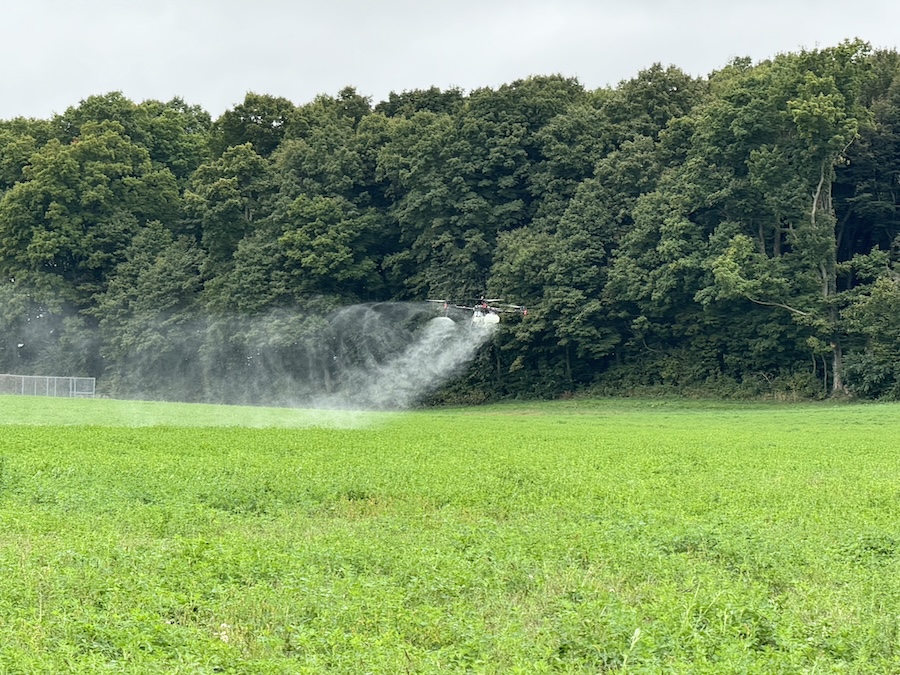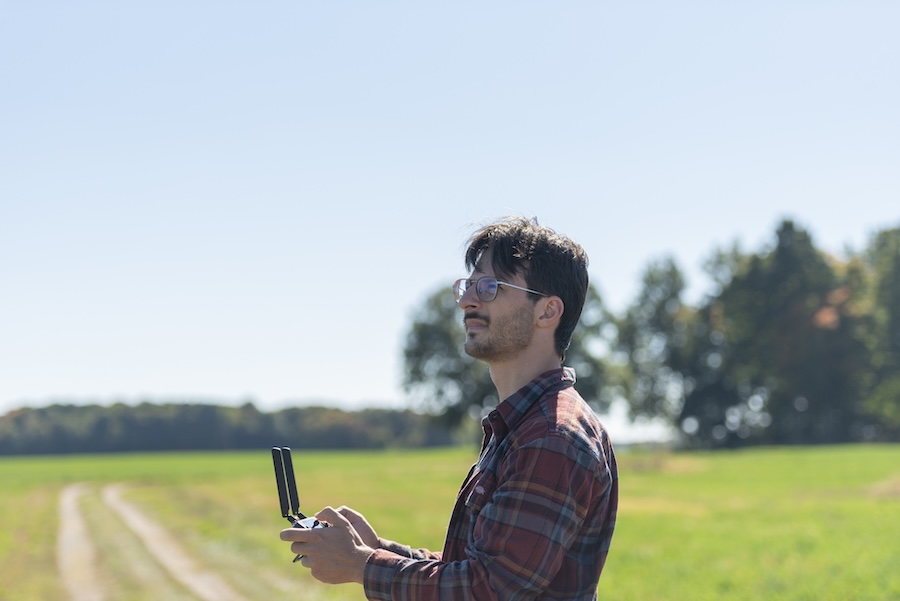The drone revolution meets the farm
October 20, 2025 - Diane Huhn

A new study out of Michigan State University, published in the journal Science, offers the first comprehensive global look at how drones are reshaping agriculture. The research finds that while drone technology promises significant benefits, including higher efficiency, reduced labor, and potential environmental gains, its adoption thus far is far from uniform. Instead, the use of agricultural drones is unfolding unevenly and is being shaped by national policy, farm size, levels of economic development, and other factors.

The study’s authors first became aware of the importance of agricultural drones and interested in their sustainability implications while researching a completely unrelated subject. Study co-author Leo Baldiga, a dual major Ph.D. student in the Department of Geography, Environment, and Spatial Sciences and the Environmental Science and Policy Program at MSU said that while researching aquaculture in rural Thailand with Ben Belton, the study’s lead author, they were surprised when a shrimp farmer of 30 years told them she was planning to make some major changes to the way she farmed due to her neighbor’s use of drones. “Turns out her neighbors were using drones to spray rice fields, and the pesticides were drifting into her ponds, killing her shrimp,” said Baldiga. “To avoid the negative impacts, she’s decided to convert most of her ponds back into rice fields.” Belton and Baldiga realized then that there was very little documentation of either the promises or pitfalls of agricultural drones.
To shine a light on the drone revolution taking place, Belton, Baldiga, and team decided to analyze patterns of agricultural drone use across multiple countries. Their work reveals a fast-growing but uneven landscape. There’s been widespread adoption in China, Latin America, and Southeast Asia, but less use in regions where regulations or investment lag.
While most agricultural technology, such as tractors, diffused from the global north to the global south over the past 100 years, drones provide an interesting example of a reversal of that trend, diffusing first from East to Southeast Asia, then to Latin America, and finally North America and Europe. Their use in many higher-income regions remains limited but is accelerating rapidly in the US. Barriers to adoption in higher-income countries include a stricter regulatory environment for spraying pesticides, pilot licensing and drone registration, and larger field sizes that are less suitable for small-scale aerial application.
Supporters of agricultural drones highlight their potential to make farming more efficient and sustainable. Equipped with cameras and sensors, drones can monitor crop health, detect pests, and deliver fertilizer or crop protection chemicals precisely where needed. In areas with labor shortages, drones may take on time-consuming activities such as spraying or monitoring, making farm management easier for aging farmers. Similarly, in areas where drones are supplanting manual backpack sprayers, they offer significant health benefits by reducing direct exposure to harmful chemicals.
But the researchers caution against viewing drones as a silver bullet. Adoption currently favors farmers with financial resources and technical know-how. “And while these tools can help reduce the overuse of pesticides and fertilizers, cutting costs for farmers while lowering environmental impact, I’m not sure that will actually be the case,” explained Baldiga. “We may run into a situation where it becomes easier to spray, and so people will just spray more. We’ll need to ensure there’s a lot of education around the concept that more is not always better.”
There are also concerns about safety and data privacy. And with much of the drone manufacturing concentrated in a handful of countries, some worry about supply chain dependence.
The study also highlights the role of regulation. Countries that have developed clear rules and guidelines have seen smoother adoption, while too many restrictions can stall innovation.
Agricultural drones are still in the early stages of their evolution. Improvements in battery life, payload capacity, and artificial intelligence could make them even more versatile in the coming years.
The big question is not whether drones will become a fixture of agriculture, but how they will be integrated and who will benefit. “This technology has the potential to transform farming practices worldwide,” said Baldiga, “but its impacts will depend on the choices we make now.”

